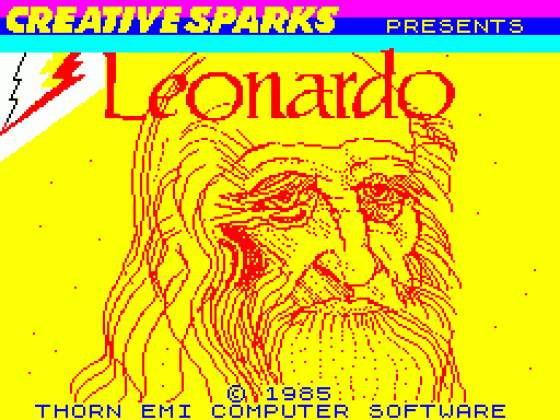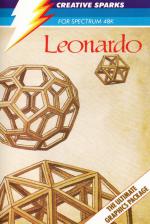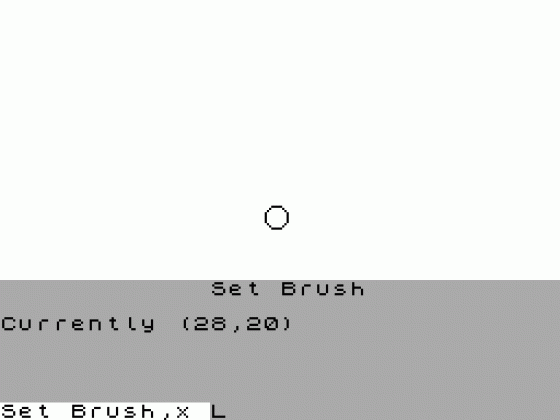Leonardo
I've had to wait a while for my copy of Leonardo so let me record a vote of thanks right away to Creative Sparks for their prompt response to our dear Editor's gentle hint to that effect. Expectations grow with waiting and the usual preliminaries are likely to go by the wayside once you get a chance to get to grips with the thing you have been waiting for.
So, without, as they say, further ago, let's see what's offered by this Graphic Utility for the 48K Spectrum. Its claims are considerable, as one might expect from a package bearing the name of someone who might easily be described as one of the most creative sparks of the Italian Renaissance - 'simply the most advanced Spectrum graphics package... in fact, the only restriction is your imagination'.
It certainly made an impression on my son. I had to pull rank to use the program myself, but not before he'd had time to produce at least one effective, if simple, screen within a very short space of time. I include it if only to show that a quick start can be made with this package.

Keyboard and joystick control are available and a 98 page manual is waiting to take you through the facilities offered. It's a comprehensive manual and worth noting here that it is written in a very effective and practical style. More like a guide at first to some pretty heavy stuff which, if approached in any other way, would have almost certainly put off many a potential user.
The main Menu offers three options: Create Graphics, Save Graphics and Load Graphics. Starting to draw using the Pixel Cursor, a small flashing black dot on a white screen is straightforward. This is the pen position which, of course, can be moved as if the pen were on the paper, or lifted, in order to be moved onto another part of the screen. The current mode and the cursor position (measured in pixel units) can be called and displayed in the top left corner of the screen. Brush size - the number of pixels in a stroke - can be changed easily. After some experimentation, this facility becomes quite easy to use.
At any time, the Information Window can be called. This gives the user an update on the current state of the program. e.g. Mode, Cursor information, brush size, line information and so on. Curved lines can be drawn allowing some fascinating experiments with ellipses. At any time, those inevitable mistakes can easily be remoed or erased from your drawing. There are no problems either adding colour of filling areas indicated by the cursor. The "Window" facility also allows a great deal of scope for creating colour patterns on the screen. This same facility enables a small rectangular window to be defined in your picture.
Creating colour patterns is just one way of using the window, magnifying is another. Only a small area of the screen can be tackled at a time and the magnified image printed elsewhere. Words and UDGs can be incorporated into pictures and the 'blocks' so created can then be inverted or rotated.
Another feature offered by Leonardo is "programmed drawing", a way of creating and then drawing and repeating complex patterns and shapes. This facility is useful, but requires quite a lot of work and time spent with the manual.
Finally, scrolling can be achieved. Either the whole icture or only part within a window can be scrolled in any direction. Using the scrolling technique, further textured patterns can be created.
The whole program has enough prompts and signals for the user to have all the information he or she needs at any given time. Having said al this and with so many Graphics packages now available for Spectrum users, some perspective is needed in order to assess utilities like Leonardo. I thin it may well be time to do so. And I hope to be able to this next issue with special reference to Leonardo.


 1st October 1985
1st October 1985

